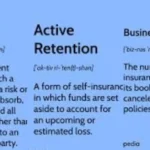Exclusive licensing agreements in Texas provide a unique way for businesses to commercialize technology while protecting intellectual property. Such agreements allow a licensee to gain sole rights to use, develop, and market a specific technology, often involving patents, trade secrets, copyrights, or trademarks. Understanding the legal framework surrounding these agreements in Texas is crucial for both licensors and licensees to avoid disputes and maximize the benefits of their partnership.
What Is an Exclusive Technology License?
An exclusive technology license is a contractual agreement in which a licensor grants a licensee exclusive rights to utilize a specific technology. This exclusivity often prohibits even the licensor from using the technology within the agreed scope. Unlike non-exclusive licenses, which allow multiple entities to use the same technology, an exclusive license guarantees singular control to the licensee, fostering a competitive edge.
Key Characteristics:
- Exclusive Rights: The licensee holds sole access to the technology, ensuring competitive advantages.
- Defined Scope: The agreement specifies the permitted uses, geographical territories, and industries.
- Licensor Obligations: The licensor often provides warranties that the technology is free from third-party claims.
Legal Framework for Exclusive Licensing in Texas
Exclusive licensing agreements in Texas are governed by several legal principles, blending state-specific statutes and federal intellectual property laws. Here are the essential considerations:
Intellectual Property Protection
In Texas, intellectual property rights form the foundation of exclusive licensing agreements. Common forms of IP involved in these licenses include:
- Patents: Governed by federal law but enforceable in Texas courts.
- Trade Secrets: Protected under the Texas Uniform Trade Secrets Act (TUTSA), which ensures confidentiality and legal remedies for unauthorized use.
- Trademarks and Copyrights: Governed by federal laws but subject to state-specific interpretations in licensing disputes.
Enforceability
For an exclusive license to be enforceable, the contract must clearly define the scope, duration, and terms. Texas courts require specificity in agreements to prevent ambiguity and legal challenges.
Dispute Resolution
Texas offers a robust legal framework for resolving licensing disputes, including:
- Litigation: Texas courts handle breaches of exclusive licensing agreements, providing remedies like damages or injunctions.
- Alternative Dispute Resolution (ADR): Mediation and arbitration are commonly used to avoid prolonged legal battles.
Drafting an Exclusive License Agreement
Creating a clear and enforceable agreement is essential to avoid misunderstandings and legal pitfalls. A well-structured exclusive license agreement typically includes:
1. Grant of Rights
Define the technology being licensed and the exclusivity terms. Specify whether sublicensing rights are included.
2. Payment Terms
Outline financial arrangements, including royalties, upfront payments, and milestones.
3. Duration and Termination
State the agreement’s term and conditions under which it can be terminated, such as breach or mutual agreement.
4. Confidentiality Provisions
Ensure that trade secrets and other proprietary information are protected.
5. Dispute Resolution Mechanism
Include clauses specifying how disputes will be resolved, whether through litigation, arbitration, or mediation.
6. Licensor Obligations
State the licensor’s responsibility to provide support, such as documentation or updates to the technology.
Benefits of Exclusive Licensing in Texas
Exclusive licensing agreements offer substantial advantages to both licensors and licensees. These benefits often drive the popularity of exclusive arrangements in the tech and innovation sectors.
For Licensors:
- Revenue Generation: Enables monetization of intellectual property without direct commercialization.
- Market Expansion: Partners can leverage their market presence to expand the reach of the technology.
- Control Over Use: Ensures the technology is used in alignment with the licensor’s objectives.
For Licensees:
- Competitive Advantage: Sole access to the technology enhances market positioning.
- Legal Safeguards: Protected rights ensure exclusivity against third-party infringement.
- Investment Opportunities: Clear ownership encourages investors to fund further development.
Challenges and Risks
Despite their advantages, exclusive licenses are not without challenges. Understanding potential risks helps in crafting better agreements and mitigating disputes.
1. Ambiguity in Terms
Poorly defined terms can lead to disagreements, particularly regarding exclusivity scope or sublicensing rights.
2. Market and Technology Changes
Technological advancements may render the licensed technology obsolete, while market shifts could reduce its value.
3. Disputes Over Royalties
Conflicts often arise regarding payment terms, especially in the absence of clear royalty structures.
4. Litigation Costs
Disputes can lead to expensive and time-consuming legal battles, particularly if the agreement lacks a dispute resolution clause.
Exclusive vs. Non-Exclusive Licenses: A Comparison
| Aspect | Exclusive License | Non-Exclusive License |
|---|---|---|
| Rights Granted | Sole rights to use and commercialize technology | Multiple licensees can access the same technology |
| Licensor’s Role | Limited involvement post-agreement | Active involvement with multiple licensees |
| Market Impact | Greater exclusivity, higher market control | Broad access, potentially reduced license value |
| Legal Complexity | Higher due to exclusivity and potential disputes | Lower complexity, fewer restrictions |
| Cost to Licensee | Generally higher, includes premium exclusivity fees | Lower, shared licensing costs |
Real-World Applications
Exclusive licensing agreements are widely used in industries such as pharmaceuticals, software development, and manufacturing. In Texas, these agreements often drive innovation by allowing startups and smaller companies to leverage patented technologies without bearing the full cost of development.
Case Example:
A Texas-based biotech firm licensed its patented drug delivery technology exclusively to a multinational pharmaceutical company. This arrangement allowed the licensee to commercialize the product globally while providing the licensor with substantial royalties.
Key Takeaways for Negotiating Exclusive Licenses
For licensors and licensees alike, effective negotiation ensures mutually beneficial agreements. Here are some tips:
- Define Objectives: Both parties should clearly articulate their goals and expectations.
- Include Performance Milestones: These ensure that the licensee actively uses and commercializes the technology.
- Plan for Dispute Resolution: Agree on arbitration or mediation clauses to reduce litigation risks.
- Regularly Review Agreements: Periodic reviews help adapt to market or technological changes.
Conclusion
Understanding Texas law on exclusive licensing of technology is essential for successfully navigating this complex legal area. By crafting clear agreements and considering both benefits and risks, licensors and licensees can maximize their partnership’s potential. Whether you’re protecting a groundbreaking innovation or seeking a competitive market advantage, exclusive licenses can be a powerful tool in Texas’s thriving tech ecosystem.











